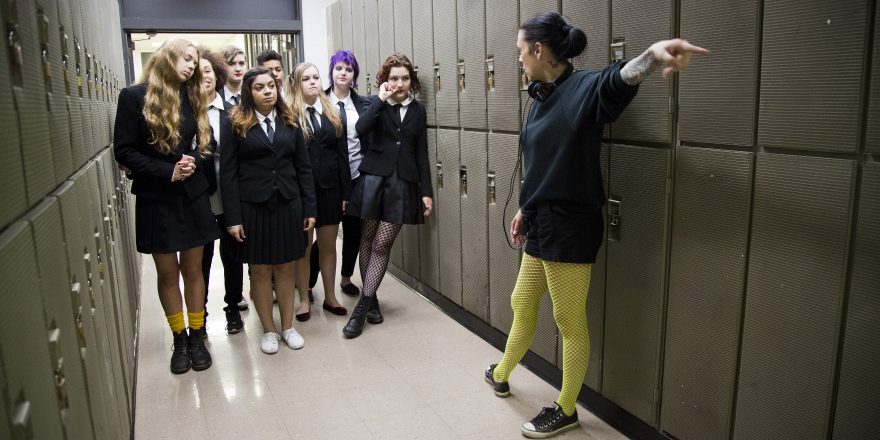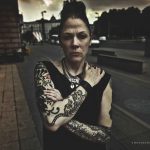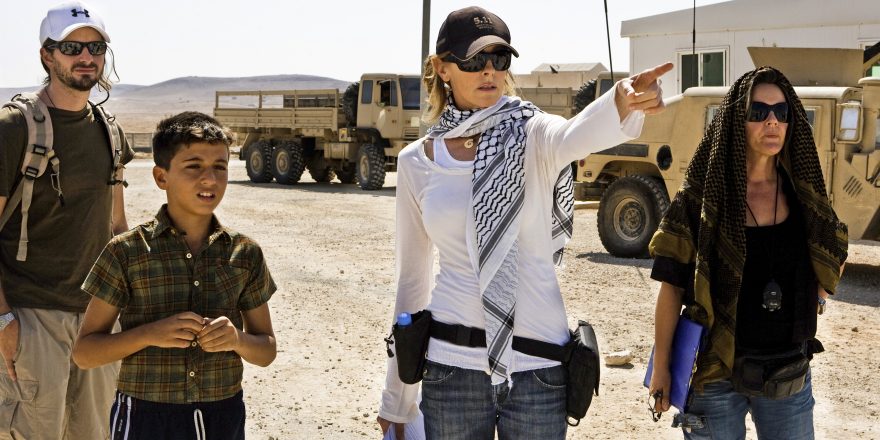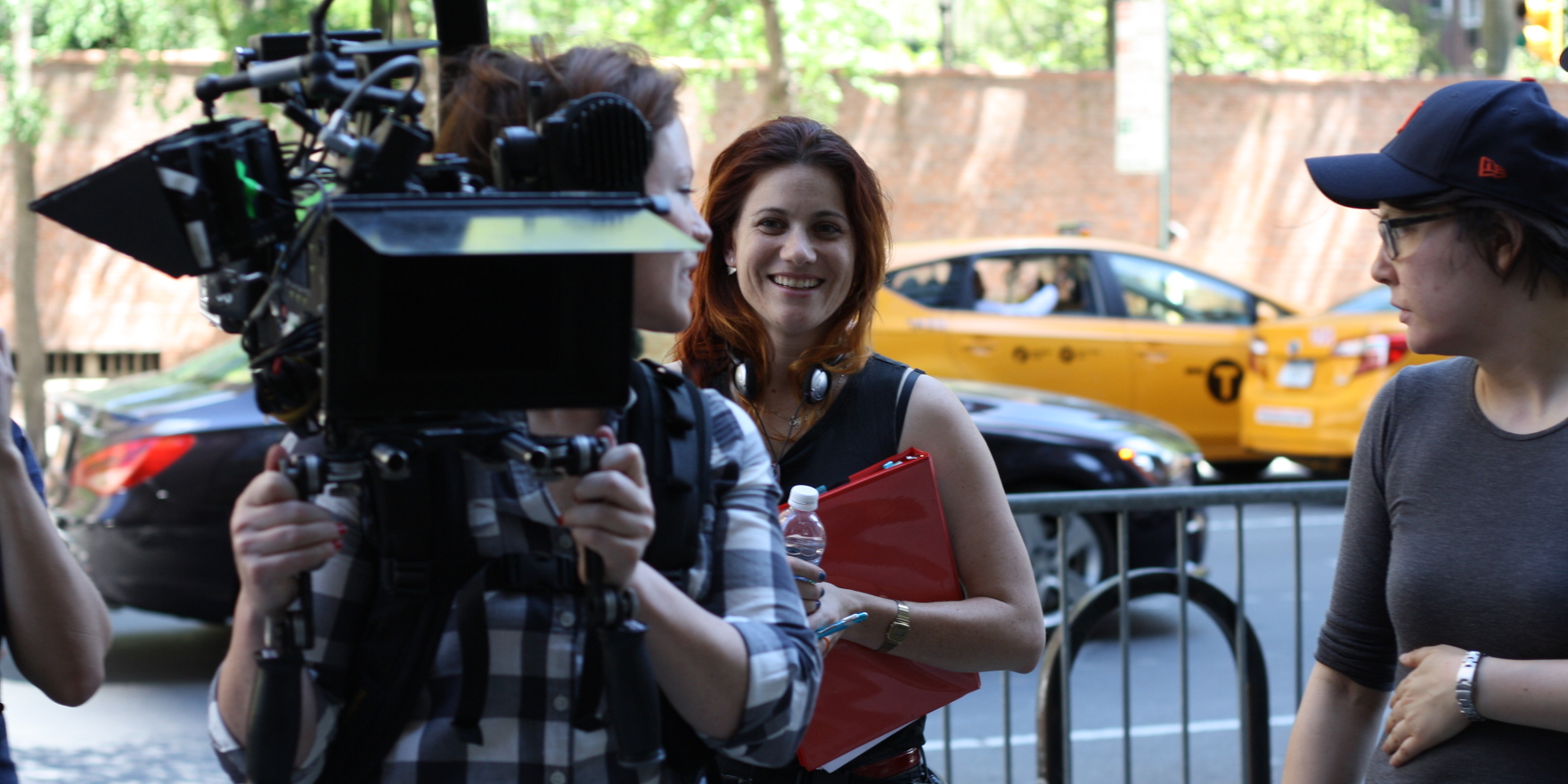I just read the Uma Thurman interview in the New York Times which details her accounts of abuse from Harvey Weinstein and Quentin Tarantino. It’s harrowing. It gutted me.
Before that article was published, I had already begun writing the following piece, which is in response to so many other horrific accounts about the treatment of women in the film industry. I wanted to write something that might contribute to a plan moving forward – a strategy for continued empowerment among women, in this case directors. What follows are simply different accounts from myself and my filmmaking peers which suggest that the paradigm has been slowly shifting and is now set to topple.
The allegations and admissions about abuse toward women in front of the camera, coupled with the dismal statistics regarding support for women behind the camera, define a staggering pattern of gender-based oppression – a seemingly unbearable environment for any human, let alone a creative and intelligent one. The question is not what brings women to this industry but specifically in the case of female directors, what keeps them there? So many women, like myself, came to feature-length narrative filmmaking from someplace else. We gained a kind of confidence, validation and resilience in another area of creativity and/or scholarship and, once we started directing films, it could not be undone – an alternate, totally empowering pattern emerged and eclipsed other aforementioned patterns. Other women who took a more conventional path into film directing seem to equally embody a fierce internal power, otherwise they would do something else of course. My positive takeaway from all the traumatizing and morale deflating reports coming out of Hollywood has been to recognize all the outstanding women behind the camera making films on their own terms (possibly still uphill both ways, barefoot and in the snow) and listening to their advice about how to do better moving forward. We must move forward.
I was asked recently if I had ever been harassed on a film set. It occurred to me then that I have rarely been on a set where I was not the director. In fact, I could only vividly recall one instance. I was a sophomore undergraduate student in the OSU film program, which had a pretty traditional production model: scripts/treatments were submitted at the beginning of the a school year, two or three were chosen and then the directors picked their crew. Although I was not chosen last, I was assigned to a very insubstantial role. On days I was not standing by watching boys make a movie, I got to operate the slate, which although a very important job on set, was not the job I wanted or was trained/training for. At that time, on that set, I wanted to D.P. I was fully capable – as capable as the D.P. the director had chosen. We had been side by side in class. I knew what he knew. One day, the regular D.P. was out sick and instead of letting me fill in, which I had requested, the director brought in an outsider – an alum of the same program. I was furious. I directly experienced a system that undervalued me without hesitation or regret. I finished that film, picked up my own camera again and have since never returned to a set where I don’t have agency.
I came to feature length narrative filmmaking through visual art and dance, and all of the early films I made were short performance-based, single-takes, with no additional light or sound and handmade titles. I felt resistant to actualizing my ideas with typical tools and methods. I could do whatever I wanted and so I did. (And still do.) From my position both in front of and behind the lens, I realized the synthesis of my obsessions. I immediately bought my first camera and in so doing, I recovered a phantom limb which I did not even realize was missing.
Over the years, I have worked incredibly hard and arrived back at narrative filmmaking by circumventing most of the system, and always on my own terms. When I think about my path from there to here, I feel like I got into the house by kicking in a small basement window – which although exhausting at times, is still preferable to crawling up the front steps just to be knocked off the front porch over and over.
According to a January 2018 article by Derek Thompson called The Brutal Math of Gender Inequality in Hollywood, “The numbers are staggering: Of the top 250 films of 2017, 88 percent had no female directors, according to the most recent “Celluloid Ceiling” report from San Diego State University. What’s more, 83 percent of the films had no female writers, and 96 percent had no female cinematographers. According to earlier versions of the survey, more than 90 percent of major studio films have no female assistants on set, including gaffers, key grips, or supervising sound editors.”
If the odds are so dead against women in the film industry, why do so many women keep making films? (Well, considering everything, why do women keep doing anything really?) This is a dumb and rhetorical question, of course. But it also makes me deeply curious about what makes female filmmakers tick. What is a women’s internal power and where does it come from?
In her essay to accompany Video Data Bank’s anthology I Say I Am, Maria Troy writes: “The feminist movement’s second wave drive to problematize female subjectivity, validate personal history, and change the position of women in society has had a profound effect on the artwork women produce.”
From the OGs of the ’70s to the third wave riot grrls of the ’90s to the cool kids with cameras of right now, so many women making movies have done so entirely on their own terms. They take risks. They ignore the rules and in so doing, contribute to an ongoing discourse about feminist filmmaking, the politics of representation and the economy of media production.
For this piece, I asked about two dozen female filmmakers about their audacity and where it comes from. I also asked them to offer suggestions for other filmmakers who are committed to creating more inclusive film sets and production models.
Here are the responses I received:
– Where does your audacity come from?
Ana Asensio (Most Beautiful Island)
I believe that doing things in a conventional way limits and diminishes us. How my father behaved in his life was a clear example of how much happier you can be by making your own rules, and that is the legacy I now make a point to carry on.
Parisa Barani (Ablution)
My audacity comes from my roots and my upbringing by a single mom in Tehran during the Iran-Iraq War.
Janicza Bravo (Lemon)
I’m the only child of a woman who was in the army. Most of my nerve is hers. It was learned. She was an alpha and so was every woman that was in and out of my life from 0 to 18. Perhaps it was cultural. But they went at everything without compromise, even the minutia.
Eliza Hittman (Beach Rats)
It’s just in my fiber! According to my mother, when I was in the first or second grade, I was sexually harassed in the schoolyard by a boy who cornered me and told me to suck on his penis. My mother asked me how I handled the situation. Did I call a teacher, go to the office, etc.? My response was something like this: “No. I told him to pull his pants down and then I looked at his penis and said it wasn’t good enough.”
Gina Kim (Bloodless)
My audacity comes from the courage to admit my limits and go beyond them. That I am one of a kind, not in spite but because of all my shortcomings and defects from the mainstream standards.
Alix Lambert (Mentor)
I’m not sure where audacity comes from. It can often feel quite pedestrian – it can come from need, fear, joy, excitement, pain … maybe more important to me is that wherever it comes from it is used in the service of integrity.
Leah Meyerhoff (I Believe in Unicorns)
Independent filmmakers need to be brave. Women directors need to be fearless. Making a feature film is like pushing a boulder up a hill in the snow. Backwards and while wearing heels. (Well, actually I only wear boots on set but you get the idea.) Women directors face an uphill battle at all stages of their careers, which only gets steeper as production budgets get larger. For every “yes” there are at least a dozen “no”s. If we weren’t ready to face adversity with pathological optimism, we might as well pack it in and go home.
Ry Russo-Young (Before I Fall)
Over the years of being a director, I’ve come to understand that I set the tone for everyone else. I’ve been told by crew that the director can destroy a day or make everyone feel it’s a healthy work environment. So I take my actions and my tone quite seriously. That said, I don’t worry too much about how I “sound,” because that is something that women often do (at least I used to do it). We worry about people liking us or thinking we’re a “bitch” and that can lead to bad decisions for a director (for example, not doing another take because the focus puller is tired and will hate me). If I worried about what people thought of me or how everyone was feeling on set, I’d never get anything done. So it’s a tricky balance.
Elisabeth Subrin (A Woman, A Part)
In some ways, my audacity comes from having little to lose. I began my career as a feminist experimental filmmaker and video artist, so I knew early on that I would be marginalized. Teaching allows me to never have to depend on the commercial film industry for my livelihood, and to remain truly independent. So, why not speak out for and create exactly what I believe in, both aesthetically and politically?
Jessica M. Thompson (The Light of the Moon)
It is all due to my grandparents and my incredible migrant single mother. My mother is from Malta and migrated as a baby to Australia, where she lived in a chicken shed for the first five years of her life and did not learn English till she started primary school. My grandparents left the only home they’d ever known, got on a boat, traveled the turbulent seas for three months – while my grandmother was six months pregnant! – and ended up in a country where they did not know the language, with only a few hundred dollars to their name – all for the pursuit and promise of opportunity. Growing up with my grandparents’ and mother’s stories created the same sense of dream-chasing and bold risk-taking within me, and taught me that hard work pays off! When my father left when I was three and my mother raised me and my three older siblings on her own – while taking herself back to high school and getting a double-science degree – I saw firsthand that absolutely anything was possible if you set your mind to it. I decided when I was 12 years old that I was going to be a filmmaker and have never wavered in that conviction.
Chloé Zhao (The Rider)
I want to make a living doing what I love to do.
– How do you run your film set in terms of justice/equity/feminism? What advice can you offer for anyone wanting or needing to do better in 2018?
Ana Asensio
The biggest value I stand for is respecting other people’s work. Making a film is like putting together a puzzle, and everyone involved should feel that his or her contribution is essential to the overall result. Because it is. Hiring people for how they do their work, without regard to gender, race or religion – that’s my idea of justice.
Parisa Barani
I like to hire as many immigrant and minority artists as possible, regardless of their gender, to have people on set that are new to the industry and haven’t been given a chance to do what they love most. Aside from the type of story, which should be sparking a conversation, I like to think of my set as a place that is healing and instructive for everyone.
Janicza Bravo
I’ve not been on my own film set for about two years. I’ve been working in TV, which means I’m invited into an existing ecosystem. When you can control the hiring and the environment, I urge everyone who’s putting a team together in front of and behind the camera to think in a range of shapes, shades and sizes. When I was making my feature, there was a good deal of muscling when it came to hiring women and non-whites. And as exhausting and painful as that process was, it was without question worth the end result. Who you invite into your process can say a good deal about how you see things or would like to see them.
Eliza Hittman
I hired women in key creative positions like D.P., costume designer, production designer (Hélène Louvart, Olga Mill and Grace Yun), etc. My producers and editors were all male, which are roles more commonly performed by women. It wasn’t a conscious decision. I believe it’s important to have a balance on set and think that it should happen organically in the hiring process.
Gina Kim
When I suspect inequality/injustice on a film set or anywhere, I imagine/simulate the situation reversing gender, age, race, etc., and see what happens. I am always surprised to see that what we believe to be individual, personal or isolated incidents often prove to be injustice based on social phobia.
Alix Lambert
I try to work with people who I admire, respect and trust. This doesn’t always happen. But this is the goal: a group of smart, creative people collaborating to make something together. Work hard and be kind.
Leah Meyerhoff
Studies have shown that when a project has a woman director or producer, women are more likely to be hired in other key crew positions as well. This past year I have personally directed and produced several films with entirely female crews (both above and below the line) and the energy on set was electric. Production ran smoothly. No one raised their voice. Actors felt safe to give deeply vulnerable performances. There was less ego than on other sets I’ve been on. The overall vibe was collaborative rather than competitive. Of course every production is different but I have learned from experience that inclusive crews are not only more pleasant to work on, but they lead to better films as well.
Ry Russo-Young
I focus on doing my job at the highest level I can and I implicitly understand that people will respect me for it because they’ll see that I’m prepared, organized, creative and flexible. And that I trust myself because I’m prepared. I love incoming ideas but I know how to make decisions and I know what I need. And if someone doesn’t respect me or does something inappropriate, then they can go fuck themselves; that is my attitude. If something negative does happen, I try to respond quickly and with a firm hand that says: this is unacceptable.
For example, I was recently on set and we were shooting a sex scene and the A camera operator made some creepy comment in front of the actors and as soon as I heard it, I strongly told him to stop and that those kinds of comments were not OK. In the moment, I didn’t even think about it, my response to him was instinctual and sharp because I felt very protective of the actors who were clearly nervous about the scene. So I try to be professional, kind, rigorous and unafraid. Filmmaking is tricky because it does blur so many lines. We work with emotions, we shoot sex scenes, we use heavy technical equipment, it’s all complicated and needs to be handled with care. And with audacity.
Elisabeth Subrin
It was utterly critical to me that the production on my movie was as inclusive as possible. We hired women of color for our line producer and UPM, and they were incredible at honoring my mandate in their hiring practices. I didn’t want to have an all-woman crew, because I think it’s critical that men start learning how to integrate themselves into a feminist set, and in that respect I think we were really successful at creating a production of love, respect and support for all the crew, which also had a big impact on the actors’ experiences.
Jessica M. Thompson
I am so proud of the way we ran our woman-and-minority-majority film set for The Light of The Moon (I wrote a piece about our set and “Feminist Filmmaking” for Talkhouse as well.) It was an extremely intimate story and demanded a lot from the cast and crew, so I knew we needed to trust each other completely if we were to pull off an honest, raw and realistic story. So here are some of the “rules” we had in place on our set to achieve that environment:
– To ensure our set was a collaborative, positive, safe working environment, with respect for every individual, people learned each other’s names! In pre-production, we held a cast and crew “meet and greet” so everyone could get to know each other and swap numbers. It made our set run so much smoother from the outset, as we were all familiar with one another.
– We had a rule that we had to greet every single human every single day (with a “hello” or a hug) and if there was a new crew or cast member on set that day, they would be introduced to everyone. Also, saying “goodbye” was equally as important.
– We insisted there be no prejudice, harassment or discrimination on set. I believe the cast and crew hearing these words makes a huge difference. We set the rules early on and everyone was well aware of what was expected of them.
– I made sure the PAs were well respected, that they had a voice and knew that I valued their contributions to the film. During our crew lunch breaks, I would make myself available to them so they could ask me questions, to ensure they felt their time on set was fruitful and valuable.
– I think language is incredibly powerful, so we were careful about gendered language and would, for example, say “humanpower” or “womanpower” instead “manpower.”
Chloé Zhao
I cast my crew like I cast my actors. If I can’t personally interview everyone, I’ll make sure I have a say in hiring the department heads. It’s a ripple effect.







